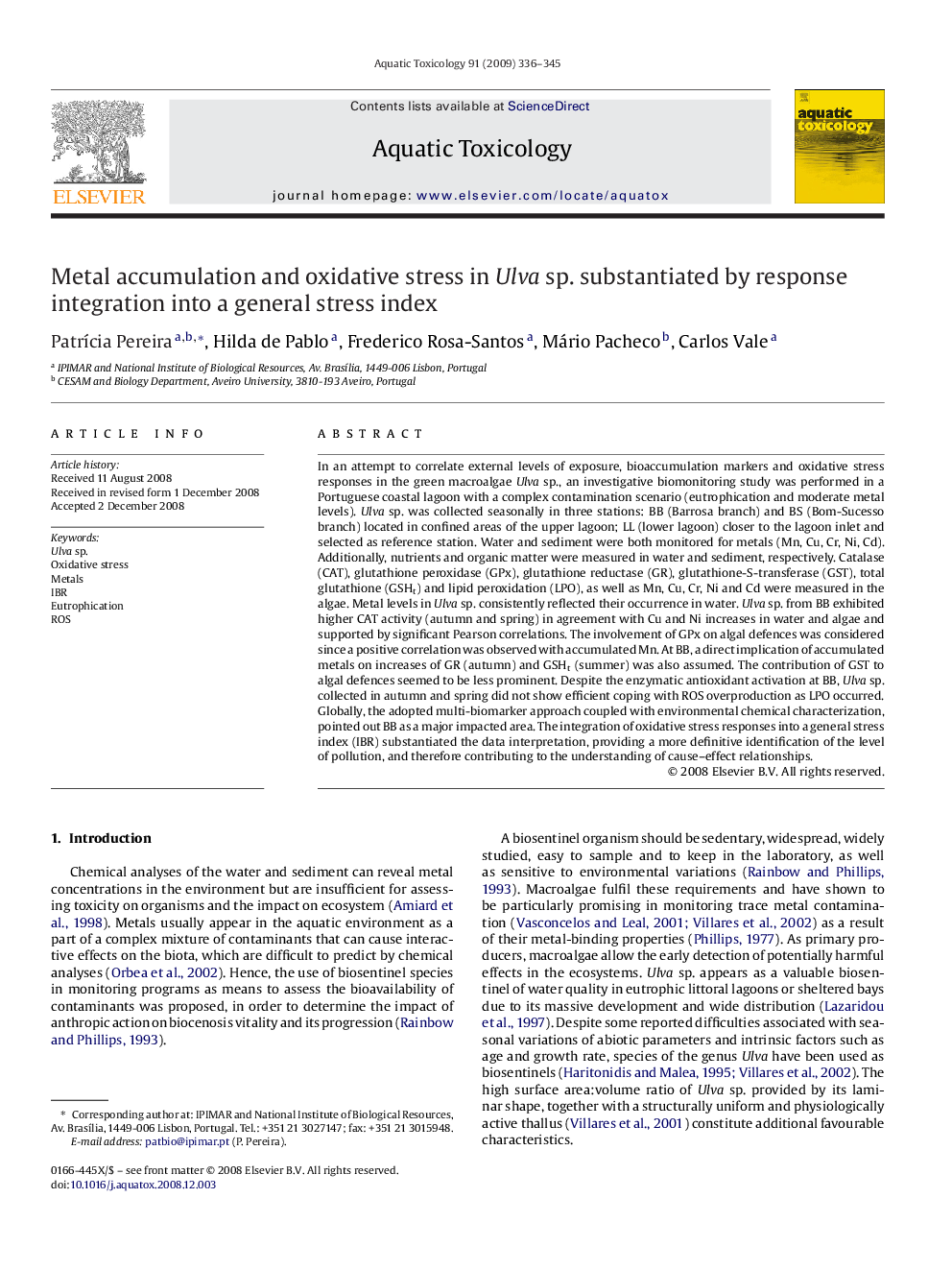| کد مقاله | کد نشریه | سال انتشار | مقاله انگلیسی | نسخه تمام متن |
|---|---|---|---|---|
| 4530291 | 1324694 | 2009 | 10 صفحه PDF | دانلود رایگان |

In an attempt to correlate external levels of exposure, bioaccumulation markers and oxidative stress responses in the green macroalgae Ulva sp., an investigative biomonitoring study was performed in a Portuguese coastal lagoon with a complex contamination scenario (eutrophication and moderate metal levels). Ulva sp. was collected seasonally in three stations: BB (Barrosa branch) and BS (Bom-Sucesso branch) located in confined areas of the upper lagoon; LL (lower lagoon) closer to the lagoon inlet and selected as reference station. Water and sediment were both monitored for metals (Mn, Cu, Cr, Ni, Cd). Additionally, nutrients and organic matter were measured in water and sediment, respectively. Catalase (CAT), glutathione peroxidase (GPx), glutathione reductase (GR), glutathione-S-transferase (GST), total glutathione (GSHt) and lipid peroxidation (LPO), as well as Mn, Cu, Cr, Ni and Cd were measured in the algae. Metal levels in Ulva sp. consistently reflected their occurrence in water. Ulva sp. from BB exhibited higher CAT activity (autumn and spring) in agreement with Cu and Ni increases in water and algae and supported by significant Pearson correlations. The involvement of GPx on algal defences was considered since a positive correlation was observed with accumulated Mn. At BB, a direct implication of accumulated metals on increases of GR (autumn) and GSHt (summer) was also assumed. The contribution of GST to algal defences seemed to be less prominent. Despite the enzymatic antioxidant activation at BB, Ulva sp. collected in autumn and spring did not show efficient coping with ROS overproduction as LPO occurred. Globally, the adopted multi-biomarker approach coupled with environmental chemical characterization, pointed out BB as a major impacted area. The integration of oxidative stress responses into a general stress index (IBR) substantiated the data interpretation, providing a more definitive identification of the level of pollution, and therefore contributing to the understanding of cause–effect relationships.
Journal: Aquatic Toxicology - Volume 91, Issue 4, 9 March 2009, Pages 336–345